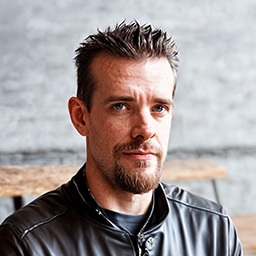Chapter 12 - All The Secrets
Chapter 12 - All The Secrets
In this final chapter, we’ll quickly review all the essential techniques you need to be a fantastic project manager. This chapter is a synopsis of everything we have covered. If you want to refer to specific points, this chapter is your one-stop place.
Chapter 1 - No Fluff Project Management
Your goal as a project manager is:
- Bring the project to successful completion
- Bring the project to completion efficiently
- Bring the project to completion predictably
The key factors that impact a project’s success are:
- Great project management
- A strong project team
- Sufficient resources
- Good planning/research/design
Chapter 2 - Constraints and the Iron Triangle
The three dimensions of project inputs:
- Scope
- Cost
- Time
The law of constraints:
- You cannot constrain more than two input dimensions. One will always vary.
Chapter 3 - Project Momentum
The best indicators of the health of a project are:
- Excitement - Social Momentum
- Measurable Progress - Technical Momentum
The twofold view of a project:
- Risks are revealed if any input constraints are out of control
- Health is revealed by the project momentum
A healthy project has great momentum and no significant factors at risk.
Chapter 4 - Project Predictability
How can you provide perfect project predictability?
- Control two of the three input dimensions and continuously update the third dimension’s estimate using the project’s momentum as the predictor.
Doing this well requires strong estimating skills and that your reporting has a bit of psychological magic.
Chapter 5 - Essential Tools
What are the essential project management tools?
- A communication tool
- An issue tracker
- A reporting tool
The simpler the tools you can use, the happier everyone will be.
Chapter 6 - Agile: The Good & Bad
What are the big takeaways from Agile?
- Embrace flexibility
- Get frequent feedback
- Aim for short iterations and units of work
- Don’t be rigid about your tools or process
- Avoid the Agile Project Management scams and titles
Chapter 7 - Kanban: The Good & Bad
What are the big takeaways from Kanban?
- Visualize the entire project at a glance
- Make it easy and addicting to deliver tasks rapidly
- Enable high flexibility to handle changes and mid-project discoveries
- Do planning and discovery before starting a project
Chapter 8 - Scrum: The Good & Bad
What are the big takeaways from Scrum?
- Incorporate planning, demos, and periods of reflection as you go
- Consider harnessing the incredible power of Sprints to get ahead
- Make sure the whole team is included and has a shared vision
- Avoid daily standup meetings; they are wasteful
- Don’t try to maintain an unsustainable pace of work
Chapter 9 - Assembling Your Team
When you are assembling a team, you want to have a team that:
- Covers the core competencies
- Has clearly assigned roles
- Communicates crisply
- Has distribution of knowledge
- Is highly motivated
Chapter 10 - Motivating Your Team
What are some practical ways to motivate people on your projects?
- Project equity
- Social media praise
- Business testimonials
- Money rewards for meeting specific metrics
- Money penalties for falling short of specific metrics
- Future work and working relationship
- Autonomy over design decisions
- Autonomy over choice of future projects
Chapter 11 - Communication Results
What kinds of results should you be communicating?
- Regular Progress Updates
- Completed Milestones
- Final Project Summary
- Project Portfolio Summary
Who should you be communicating to?
- Your projects users
- Potential future project users
- Your team
- The project stakeholders
All The Secrets
That’s everything that you need to know to become a master project manager.
Apply your energies to completing projects successfully, efficiently, and predictably.
Accomplish this by building project momentum and mitigating project risks. Ensure that you have a good vision and a strong team before the project begins.
Keep your tools and processes simple. Solve the management problems primarily through healthy processes and teamwork, not with rigid, expensive, or complex processes and tools.
Learn the good techniques from the project management literature and teachers, but be careful to avoid getting too academic. Always focus on delivering the project as the key goal.
Provide regular and effective communications to the team, the stakeholders, and your user community. Celebrate your wins!
If you practice and master those few elements, you will be a master project manager.
Go forth, build up your experience with a few projects and then enjoy the infinite returns of successful projects!


